10 Unbelievable Things You Never Knew About How Long Does Loose Leash Training Take
One of the questions I get asked the most when I speak is, “how long does it take to train my dog?”. Most people want to know the time frame they need to spend in the house with their dog and when to put him outside.
Approximately how long should you spend training your dog?
If you have never trained your dog before, it can take anywhere from days to weeks or even months, depending on your dog’s personality, age, size, breed, and even the environment you live in.
This post will give you a quick overview of what’s involved in training your dog and how much time it will take based on what you’re qualifying.
There are many controversies about the time duration of the loose leash training of a dog. But I have a tricolor puppy of 1 year old it takes one week to learn the loose leash manners. It can vary, some dog learns fast, and some may take time, but it learns with a useful training guide. Depending on my experience with dogs, it could take an average of 1 week to cope with loose leash training.
- 10 Unbelievable Things You Never Knew About How Long Does Loose Leash Training Take
- Loose Leash What Is It?
- what is Leash Training
- Loose Leash Training What Is It?
- How To Train Loose-Leash Training Steps:
- Loose Leash Training, Dog Commands
- What does loose leash walking look like?
- Training loose leash walking without treats
- Loose leash walking games:
- Loose leash walking vs heeling
- Leash for loose leash walking
- Why dogs pull on leashes
- 🔖FAQ
- Conclusion:
Loose Leash What Is It?
Loose leash walking is a term used to describe when a dog is allowed to wander around without a handler close by. A loose leash aims to provide the dog with some freedom and stimulation while also providing an emergency escape route in case of danger.
Some people believe that loose leashing can be dangerous because it allows the dog to run off into unknown territory or the path of oncoming vehicles. Others feel that it’s important for dogs to have some freedom to not become too dependent on their owners. It’s important for both sides of the debate to keep in mind the individual personalities of each dog and what type of environment he or she is accustomed to living in.
what is Leash Training
Leash training is the process of teaching a dog or puppy to walk calmly and obediently while wearing a leash. It involves teaching the dog to walk on a loose leash without pulling or exhibiting undesirable behaviors. Through positive reinforcement techniques, such as treats and praise, the dog learns to respond to cues from the handler, maintaining a consistent pace and staying focused during walks. Consistency, patience, and regular practice are essential for successful leash training, allowing dogs to enjoy safe and enjoyable walks while maintaining control.
When to start Leash Training A Puppy
Start leash training your puppy as soon as he or she is old enough to understand what you are asking them to do. Puppies under four months old cannot comprehend the idea of the following commands and will likely ignore any instruction you give. Ensure the puppy is between the ages of 4 and 6 months.
How Long Does It Take To Leash Train A Puppy
The time required to leash train a puppy can vary depending on several factors. While there is no fixed timeframe, it generally takes a few days to a few weeks to successfully leash train a puppy. Consistency, patience, and positive reinforcement play crucial roles in the training process.
Loose Leash Training What Is It?
Loose leash training is a type of dog training that focuses on teaching your dog to walk on a loose leash. The goal is to prevent your dog from pulling you or someone else along while out walking and help him learn to associate walking with positive experiences. In addition, it assures your dog’s behavioral manner.
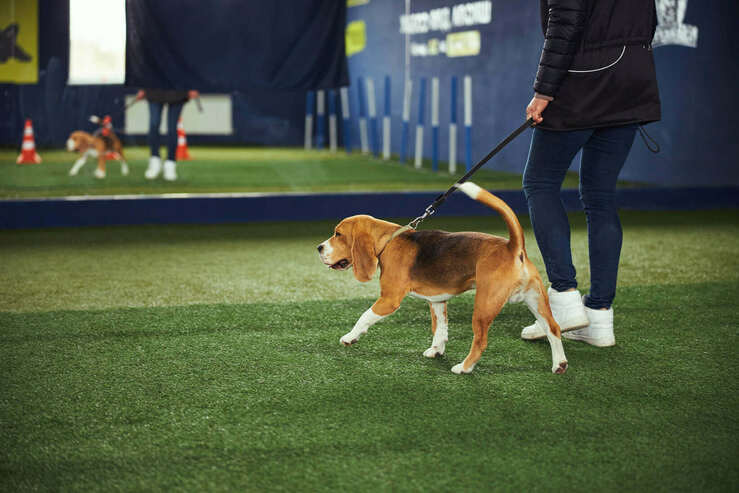
When To Start Loose Leash Training:
There is no hard and fast answer to this question, as it depends on various factors. In general, though, many pet owners start loose leash training when their dog is between 4 and 12 months old. This is generally when they are developmentally ready and have had enough socialization to understand basic obedience commands.
The personality of your dog is also important. For example, if your dog tends to be aggressive or unpredictable when he’s on a leash, it may be best to wait until he’s older or calmer before starting loose leash training. Likewise, if your dog has never been off-leash before and you’re worried about getting lost in a large city, you might want to wait until he’s better conditioned before trying out this type of training.
Extra Information
How Long Does Loose-Leash Training Take?
Loose leash training can take a few minutes to an hour or more, depending on the dog’s personality and how much training is required. You will want to start by establishing some basic rules with your dog, such as “stay” and “sit”. Once your dog knows these commands, you can begin practicing walking around the house without holding onto their leash. Gradually increase the time you are away from him, and once he is comfortable following along without being tugged back, you can begin practicing outside.
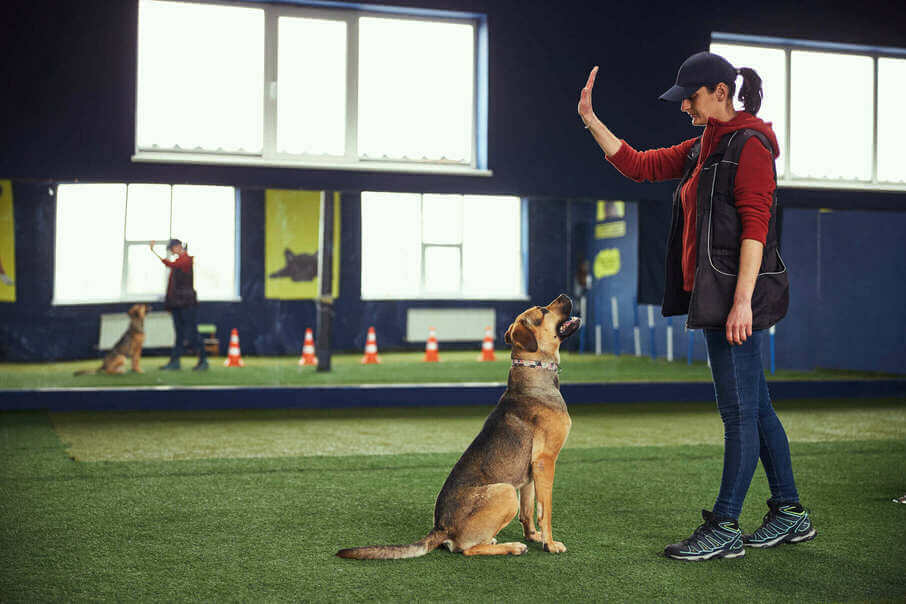
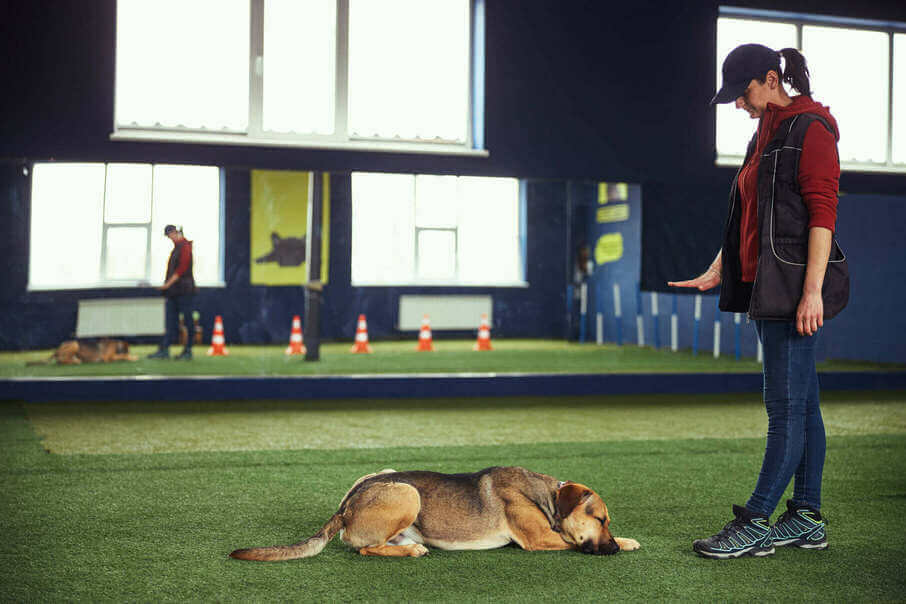
Which type of training leash is best for loose-leash training dogs?
Most dogs enjoy walking on a loose leash, but some owners find it difficult to train them properly. A good solution is to use a training leash that enables the dog to walk close to the owner while still being able to pull away if he feels like he needs space. There are three main types of leashes available: retractable leashes, body chains, and A basic loop type leash. But the retractable leash is the best type of training leash for loose-leash training dogs because it allows you to keep a close grip on your dog without constantly adjusting the length of the leash.
Retractable leashes come in many different lengths and can be easily hooked onto a belt or harness. They have a button on one end that you press when you want the leash to extend. The advantage of these leashes is that they allow the dog great freedom of movement, so they are best for dogs that need lots of space when walking.
Best collar for loose-leash training
When it comes to training your dog with a loose leash, there are a few things you need to consider. The first is the collar. This piece of equipment will help keep your dog close by while you’re walking him or her. The market offers a wide variety of collars, each with its own benefits and disadvantages.
Some of the best collars for loose-leash training have a loop at the end that fits around your dog’s neck. This keeps them close by without using an extra handle or strap. Another popular type of collar is the one with prongs on either side of the neck. These collars pinch gently when your dog pulls away, helping to reinforce good behavior and discourage bad behavior.
If you ask my opinion, there is no one-size-fits-all answer to this question, as the best collar for loose-leash training will vary depending on your dog’s breed, size, and personality. However, some popular options include the Gentle Leader collar and the Dogtra Flexi-Leash™ collar.
How To Train Loose-Leash Training Steps:
There are a few simple steps to help with loose-leash training. Start by training your dog to sit, stay, and come when called. Once your dog is reliably responding to these commands, you can begin working on loose leash walking. Follow these steps:
When you’re training a dog, it’s important to remember that they have a lot of energy and can be unpredictable. Using a loose leash, you can train your dog more effectively and control their behavior.
Step-by-Step 10 Easiest Magic Method Of Loose-Leash Training:
If you’re looking for an easy way to get your dog to walk on a leash without pulling, try one of these 10 magic methods.
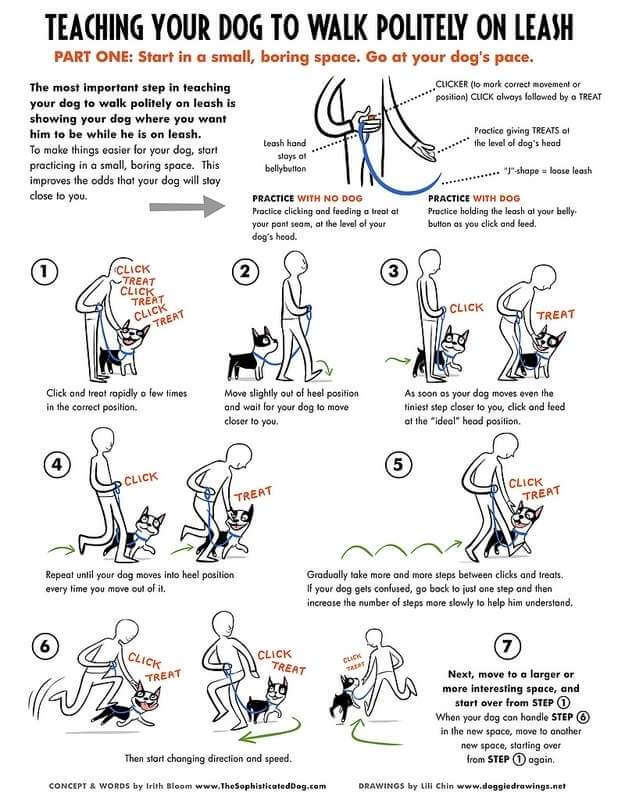
How to Train a Rescue Dog to Walk on a Leash
If you’re thinking about getting a rescue dog, it’s important to train them to walk on a leash. You don’t want them to run into traffic or get into trouble while you’re out and about. You can do a few things to help your dog learn how to walk on a leash quickly and easily.
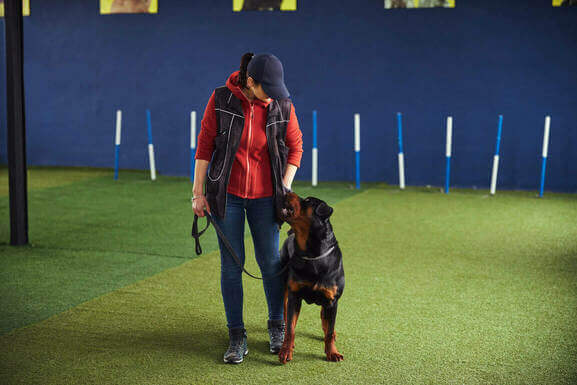
Loose Leash Training, Dog Commands
Loose leash training allows dogs to run and explore while under the guidance of their owner. This type of training is beneficial for both the dog and the owner, as it builds trust and communication between them. There are a few key dog commands that are essential for loose-leash training: “come,” “stay,” “heel,” and “down.” These commands should be used in conjunction with a loose leash, as they help keep the dog close by while still allowing them some freedom. When training your dog with a loose leash, be consistent and patient; never force or pull your pet in any direction.
Do not punish or scold your dog when he/she does something wrong. It will only increase his/her bad behavior. Keep a steady tone.
How do I tell my puppy “No”?
Puppies are curious and eager to please their owners, but sometimes they can be too keen. Common puppy mistakes include jumping up on people, begging for food or toys, and playing excessively. When you need to tell your puppy no, it’s important to use the right tone and words. Use a calm voice and explain that he or she is doing something that you do not want them to do. If your puppy does not listen, gently remove him or her from the situation. There are a few ways to tell your puppy no, and each will be effective depending on the situation.
Timeline Heading 1
One way is to use a facial expression or body language that communicates disapproval.
Timeline Heading 2
Another way is to use specific words, such as “no,” “no way,” or “not now.” If your puppy persistently tries to do something you don’t want them to, try using a stern voice and physical restraint if necessary.
Timeline Heading 3
It’s important to establish rules early on so that your puppy understands what is expected of them and knows when they have crossed the line.
Timeline Heading 4
Put your hands on your hips and say, “No!”
Timeline Heading 5
Give him an aggressive “You are a bad dog” look and then say “No!”
Timeline Heading
Give him a gentle “Yes, it is okay” look and then say “No!”
What does loose leash walking look like?
If you are looking for a way to teach your puppy how to behave, one of the best methods is loose leash walking. Loose leash walking means that you and your pup are kept close but not tethered. This type of walking allows your puppy to learn how to walk beside you without pulling on the leash, and it also gives you the opportunity to correct them if they start to wander off. To illustrate loose leash walking, here is what it looks like:
Why Walking Your Dog Is Important?
Walking your dog can be a great way to exercise and socialize with your pet. Dogs need walking in order to release pent-up energy and interact with their owners. Walking also helps keep your dog’s weight under control, which is important because obesity is a leading cause of heart disease in dogs. Here are some reasons why walking your dog is important:
Dog Abs:
Walking your dog will help strengthen his/her abdominal muscles, which will help him/her tone up and have a stronger midsection. Exercises such as walking are beneficial for making abs in guard dogs and bulldogs.
Exercise:
Walks with your dog are an easy way to get the cardiovascular exercise he/she needs without doing extra training. Plus, it’s fun! Besides, it also helps to carry on your exercise side by side with your dogs.
Mental Health:
Taking regular walks with your furry friend can help reduce stress levels and improve overall mental health. Dogs are known for being good listeners, so going for a walk together can be calming and therapeutic for both of you!
Is it an important, loose leash walking a small dog?
Small dogs need a lot of love and care, just like any other pet. However, when walking them on a leash, it is important to be aware of their personality and size so that they do not get loose. A small dog can easily become lost or scared if they are not supervised properly. It is always best to have someone else with the dog while you are away if something happens, but also make sure that the leash is kept loose so that the dog cannot pull you out.
Training loose leash walking without treats
Treats can be a great way to motivate your dog when working hard, but they can also be a distraction if you’re trying to teach your dog how to walk on a loose leash. One way to avoid this problem is to use positive reinforcement instead of treats. This means giving your dog something good whenever he does what you want him to do, without relying on treats for obedience. Here is how to train loose leash walking without treats.
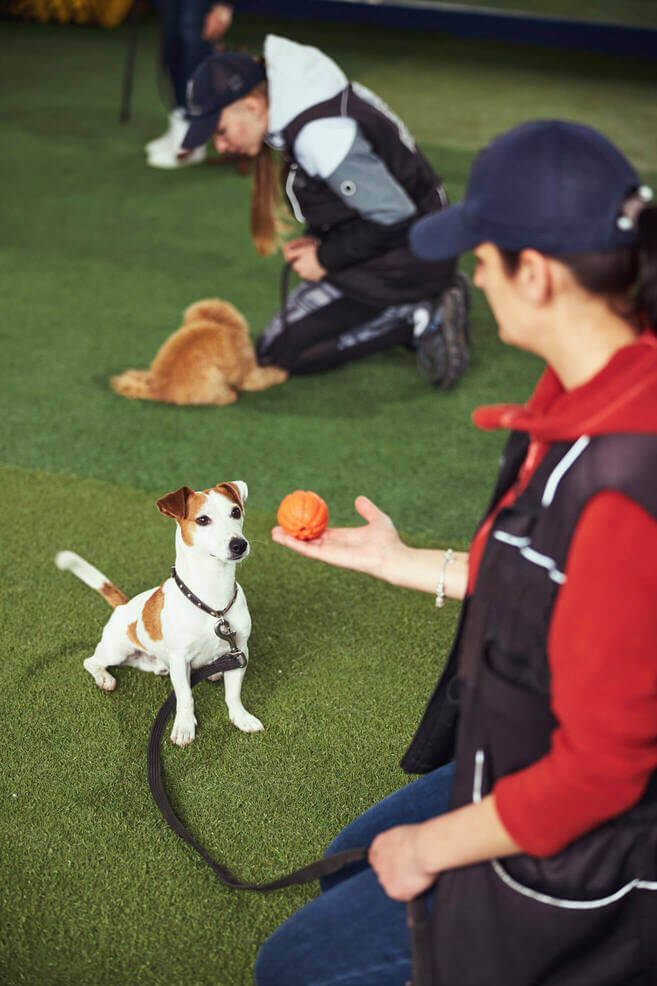
Loose leash walking games:
Engaging your dog in loose leash walks is an excellent way to keep him entertained and mentally stimulated. Some of the more popular loose leash walking games include tug of war, fetch, and hide and seek. In order to play fair, each game has its own unique set of rules. Try the simpler games first if you’re new to loosen leash walking. Then, progress to the more difficult games. Check out these loose leash walking games to keep them occupied and happy!
Freeze tag
This is a classic game that can be played with any sized group of dogs. One person starts the game by calling their dog, and then all of the other players follow their lead as they try to tag their dog. The first dog to be tagged is frozen in place for the next player to try and catch. Then, whenever your dog gets too far away from you, call them back and begin again.
Hide ‘n’ Seek
Another classic game that can be played with any size group of dogs is hide ‘n’ seek. One person starts the game by hiding somewhere on the property, and then all of the other players follow suit as they try to find them.
Important Things that loosen leash walking games that many pet owners don’t know about :-
Loose leash walking vs heeling
When it comes to dog walking, there are a few different methods people can use. One of the most popular is loose leash walking, where the dog is free to wander around and explore. On the other hand, heeling is where the dog stays close to its handler.
There are pros and cons to both approaches, but most experts generally agree that loose leash walking is better for dogs because it allows them to be more independent. On the other hand, heeling can be more challenging for some dogs because they may feel insecure if they’re not constantly being supervised. Therefore, it’s important to find a method of Walking your pet that works best for them and allows them to have fun while keeping you safe.
Loose leash walking vs heeling
Leash for loose leash walking
Loose Leash Walking Tools can help dog owners better manage their dogs when out for a walk. These tools include a leash, a lead clip, a lead ring, and a whistle. They can help keep the dog close to the owner, prevent them from getting too far away, and help identify when the dog has strayed too far. Apart from these, more tools are used, playing an important role in training.
E-collar for loose leash walking:
There are a few different electronic collars available on the market for loose leash walking. The most common type is the shock collar, which uses an electric shock to stop the dog from pulling. Other electronic collars use vibration or sound to discourage the dog from pulling. It is important to choose the right type of electronic collar for your dog’s temperament and behavior, as each type has its benefits and drawbacks. But my recommendation is not to use this tool since every pet needs love and affection to be trained.
Harness for loose leash walking:
A few different types of harnesses can be used when walking your dog on a loose leash. A collar and leash combo are the most common type, but there are also harnesses that attach directly to the dog’s collar. The advantage of using a harness is that it gives you more control over the dog’s movement, and it can prevent them from pulling on the leash excessively.
Clicker for loose leash walking:
Clicker training is a great way to keep your dog on a leash. This method uses a clicker to give your dog consistent feedback for obeying your commands. This type of training is especially useful if your dog tends to pull on the leash or run away. By using a clicker, you can keep your dog in control and teach him new behaviors without yelling or physically restraining him.
Leash for loose leash walking:
There are a few different leashes for loose leash walking, but the most common is a retractable leash. The handle has a button that lets you extend the leash. Press the button to retract the leash when you’re done.
Another type of leash is a loop-style leash. With this type of leash, you put one end around your dog’s neck and the other end through the loop.
Why dogs pull on leashes
Dog training to walk on a leash without pulling is very difficult, and most people cannot achieve it . In order to train your dog not to pull on a leash , You need to know about three things that make dogs pull.
So, you can conclude that there are three reasons why dogs pull leashes.
How to let your dog roam free on a leash?
It is crucial that you let your dog roam freely while he is walking on a leash.
How can you give your dog freedom? You can let your dog off the leash and sometimes use a loose leash to let him run in a park. When he runs around, he’ll find freedom, and he’ll be able to enjoy it. He’ll also get to know other dogs.
If you have a small house, your dog can’t move around. So, make sure that your dog has enough space to move around. Don’t keep your dog tied down. This way, he’ll feel like a prisoner, and he’ll be less likely to want to move around.
Your dog needs to run and play and explore the world around him. If he doesn’t get enough exercise, he’ll be too tired and more likely to pull.
The following are the steps you need to take in order to train your dog to walk on a leash without pulling.
🔖FAQ
Loose-leash training Why it is so hard?
It can be hard to get your dog to walk on a leash because they associate the leash with being restrained. However, a loose leash allows your dog to explore and move around as they please, making them anxious and resistant to following commands. To help your dog learn to walk on a leash properly, start by gradually increasing the time you’re outside with a loose leash.
Does it matter if I’m using shock collars or loose-leash when training my dog?
My recommendation, in this case, is to use a leash rather than a shock collar. Using a leash will probably be the best option. Utilizing a shock collar, the relationship between owner and pet will become frightening for the dog. For this reason, I recommend you go with a loose leash.
Need a long leash to walk a dog?
Short leashes are generally fine for walking dogs on a leash, but if you have a dog that pulls hard or lives in a park or other area with lots of other people and dogs, a longer leash may be better.
Conclusion:
I discussed how long loose leash training takes and hope that this information will help you with your paw problem. Loose leash training can take some time and patience to get right, but the payoff is a bond between dog and owner that is both strong and well-adjusted. Be patient with your dog and give it time to learn the game’s rules. Then, once you have a stable foundation, continue regularly practicing to keep things fun for you and your pup![DogValy]



